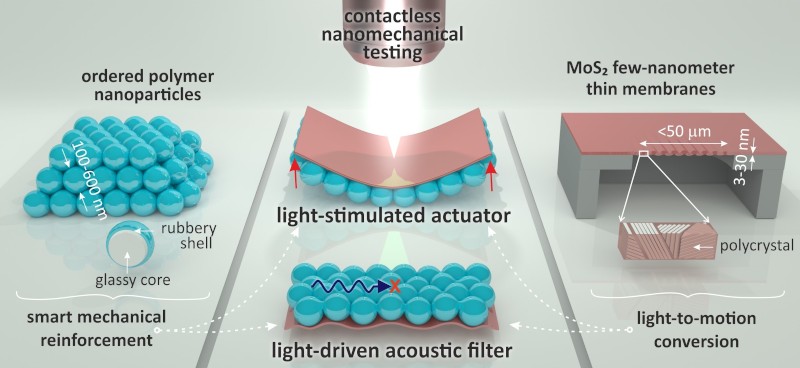- Plasmons and Mechanical Motions at the Nano-Scale, PLASMMONS. Horizon 2020, Marie Skłodowska-Curie Action Grant 101003436 - present work.
- NCN Sonata "Time and momentum-resolved studies of gigahertz acoustic phonons in acoustoplasmonic metamaterials" (2021/43/D/ST3/02526).
The ongoing increase of the wireless transfer rate and recent advances in terahertz research and integrated photonic networks demand the processing of electromagnetic and acoustic signals at very high frequencies. Such functionalities can be achieved with the so-called acoustoplasmonic metamaterials. High frequencies of acoustic phonons can result from spatial confinement, while strong coupling to electromagnetic signals can be mediated with plasmonic excitations. In this project, we will study plasmonic excitation, propagation and decay of acoustic phonons in acoustoplasmonic metamaterials with momentum-resolved pumped Brillouin light spectroscopy with nanosecond time-resolution. This work will pave the way for studying the non-equilibrium mechanical and thermal properties of nanodevices.




